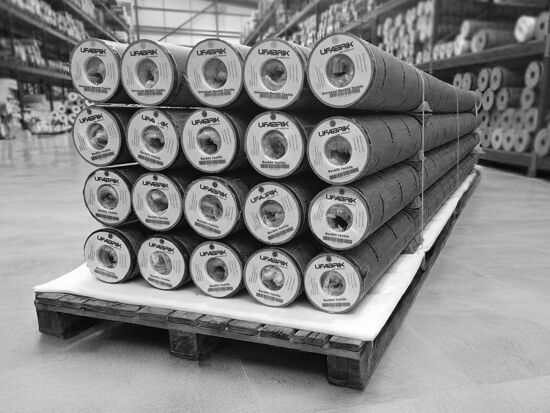The importance of textiles in the reinvention of the print industry

Textiles have a huge part to play in the reinvention of the print industry. What we print onto is equally important to the technology that facilitates the decorative surface printed product.
Over the last 85 years new fibres such as polyester (invented by Dupont in 1935) have become increasingly popular – durable, affordable and available in any quantity these fibres and their derivatives are in principle refined from crude oil and have multiple applications. But not without a cost on the environment. We have created textiles that last forever. Synthetic fibres contribute to the industries carbon footprint both at the point of manufacture and end of use. Simply put - at present synthetic fibres are not biodegradable. They do degrade (over hundreds of years), but as they do so they contaminate the environment with trillions of micro beads, as these micro beads degenerate, they reduce is size. Polyester has now been discovered in the world’s deepest oceans and is ever present in food chain.
That’s not to say that cellulose fabrics are without fault either, whilst natural fibres are biodegradable – soil erosion due to the over intensive farming of cotton, pesticides, GM crops and cottons massive requirement for water during cultivation and processing also have a huge part to play in the unsustainable practices of the textile industry.
The fibres of the future must be reinvented to deliver environmental protection and a solution to the unsustainable use of fabrics that serve to contaminate our planet and destroy our habitat.
-FESPA.jpg?lang=en-GB) Caption: Material science must be reimagined. Dupont’s Bio-materials team are focused on providing solutions to the industry’s most pressing issues.
Caption: Material science must be reimagined. Dupont’s Bio-materials team are focused on providing solutions to the industry’s most pressing issues.
In our most recent podcast we talked to Samit Chavli – an accomplished chemist and industry expert. Samit began his career in digital textile printing, developing the Dupont Artistri inks (amongst other innovations) and has five patents for his accomplishments so far. He is now concentrating his skills on the development of biomaterials for Dupont. It’s these innovations that will transform the fibres of the past to offer sustainable solutions for the present and future development of the worlds textile industry.
One such fibre which today celebrates its 20th Anniversary is Sorona – which has been reengineered to be a bio-based polymer. Here’s a summary of the key points discussed during our conversation.
Listen to the full Podcast here.
.jpg?lang=en-GB)
Caption: Sorona (R) is a biopolymer and as a fibre offers a huge opportunity to replace the use of spandex for apparel applications.
Sorona (R) is a biopolymer and as a fibre offers a huge opportunity to replace the use of spandex. Why should we replace spandex you might ask? Because as a synthetic fibre constructed from nylon and elastane when spun into a fabrics construction its enables stretch – but both elements are petrochemical derivatives. Spandex’s stretch properties also deteriorate over time, it cannot be dyed or coloured during printing, nor can spandex be recycled (unzipped). Sorona is a cellulose polymer refined from Corn sugar. Sourced sustainably is offers an environmentally safe solution for multiple textile applications including Sportswear, Athleisure, Performance garments, apparel and even carpets. As a cellulose polymer it can be extracted and split from a synthetic fibre during the recycling process.
Bio based materials are vitally important to the reinvention of the Textile Industry. That’s not to say that we must completely replace existing fibres – however changing their manufacturing process or DNA to add biocatalysts and biopolymers improves the environmental properties of the textiles we create and utilize in our daily lives.
As a cellulose polymer Sorona also has many other properties aside from stretch. Its insulating, durable, doesn’t lose elasticity, its anti-wrinkle and snaps back to its original shape, its quick drying, feels luxuriously soft, and offers exceptional colour intensity. A few more facts about Sorona; 37% of the polymer is made using annually renewable plant-based ingredients. As a revolutionary Bio-PDOTM molecule it turns a formerly petrochemical process into an eco-efficient biological one. Sorona is created using 30% less energy and releases 63% fewer greenhouse gas emissions when compared to the production of Nylon 6 (Spandex is a combination of elastane and nylon). Sorona is a USDA certified bio-based product and received OEKO-TEX Standard 100 certification.
Circular design demands that we now engineer end of life into the products that we create. Samit and his team are focused on the future of bio-based fibre technology and the sustainability attributes of the Dupont products. It’s these innovations that will transform the textiles of the future to build future safe fabrics that reinstall biodiversity.
-FESPA.jpg?lang=en-GB)
Caption: Synthetic textiles have in the past been created to last forever – but nature is regenerative – and the synthetic textiles of the future must evolve as nature intended.
As recycling technologies evolve, so will the components and constructions of the blended textiles we use on a daily basis. It’s still early days for commercial recycling on the scale necessary for circular design to be applied to meet global demand - that said billions of pounds are being invested. Currently most textiles are recycled by composition - shredding the waste and then filtering by colour using optical sorting technology or as in the case of rPET melted down to produce plastic pellets that can be reused and regenerated to form rPET polyester fabrics.
Blended textiles are difficult to recycle as unzipping (splitting) the woven fibres when composed of various cellulose yarns and or polyester blends, or mixed fibres of petrochemical origin. Research and innovations are developing at speed to build the required infastructure for recycling using various methods – the denim industry by example can potentially unzip denim using enzymes to dissolve and extract the cellulose fibres away from the synthetic stretch yarns that are added for comfort. However - the energy and science utilized in the recycling process must be environmentally beneficial, commercially viable and sustainable.
Future innovations for polyester include controlling the shedding process of micro-fibres. Catching the small micro beads before they enter the waterways is now achievable using filtering technologies. Developing textiles that degrade when exposed to specific microorganisms (as in the biodiversity of nature) are high on the agenda for material science engineers.
How we manage the textiles we use will continue to develop as time moves forward and collaboration and transparency between industries is essential. The science of materials starts with the chemist and accelerates with industry collaboration. We are at the beginning of a new era for the textile industry, and just as the digitization of the print space will conserve the earths precious resources so will the ongoing development of fibre innovations for multiple applications – the future of both textiles and digital printing are forever intertwined.
Interested in joining our community?
Enquire today about joining your local FESPA Association or FESPA Direct
Recent news

Why more print service providers are turning to consignment stock management
Robin East, Group Chief Commercial Officer at UFABRIK discusses how consignment stock management is gaining popularity in the print industry, offering improved cash flow and operational efficiency. It ensures on-site stock availability, enhancing customer service and reducing delivery times. This approach also promotes sustainability through consolidated shipments and fosters stronger supplier-customer relationships.
.png?width=550)
Personalisation is a long-tail experience: how Variable Data Printing can drive years of engagement
Pat McGrew shares how Personalisation in print offers long-term engagement, not just one-off interactions. Using minimal data, tailored campaigns across formats like mail and signage can boost loyalty. GDPR compliance is key, requiring transparency and consent. Success stories demonstrate personalisation's power, making it a vital competitive edge.

How is AI quietly shaping the print industry
Johnny Shells, Principal Analyst at Keypoint Intelligence shares how AI is quietly transforming the print industry, enhancing efficiency and personalisation. It automates tasks like prepress checks, job scheduling, and colour management. AI also enables personalised printing, reduces waste through demand forecasting, and improves customer service with chatbots. This technology optimises workflows, not replaces human expertise.
